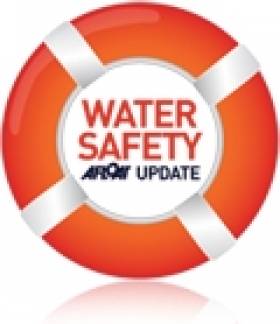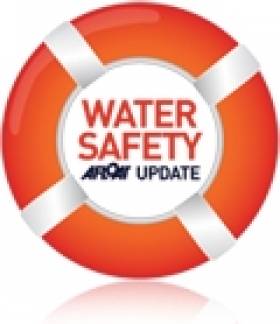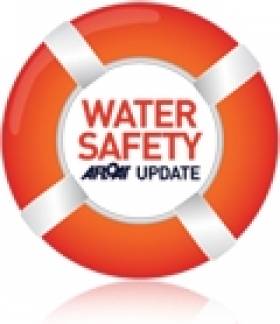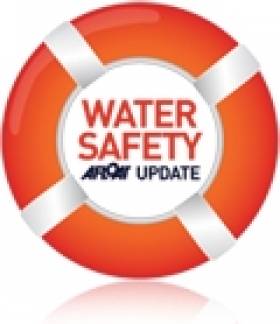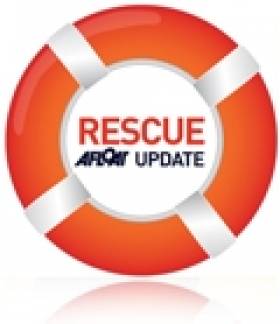Displaying items by tag: lifeguards
National Lifeguard Training Centre Opens In Tramore
#WaterSafety - Tomorrow (Monday 9 March) sees the opening of the new National Lifeguard Training Centre in Tramore, Co Waterford, as The Irish Times reports.
The €500,000 inter-agency initiative will have a focus on training people for the growing discipline of surf lifesaving both around Ireland and abroad.
But the three-storey facility on Tramore's Lower Promenade has practical water safety implications for beachgoers over the summer months, as the town's duty lifeguards will have a panoramic view of the strand and shore from the observation deck.
The Irish Times has more on the story HERE.
#WaterSafety - The RNLI is advising anyone planning on visiting its lifeguarded beaches on the North Coast to stay well away from dangerous cliff edges that have been impacted by recent weather conditions.
Winter storms have dramatically changed the profile of beaches at Whiterocks, Portrush East and Portstewart, creating high sand cliffs that are unstable. RNLI lifeguard manager Mike Grocott is asking the public to be mindful of the changes ahead of making a visit.
"Winter storms have taken their toll on the make-up of some of the beaches this year, particularly at Whiterocks, Portrush East and Portstewart, and many people returning to these favourite spots may be surprised at how different everything looks.
"This includes significant erosion of the sand dunes where gentle slopes have washed away leaving sheer sand cliffs, some of which are up to 18 feet high.
"Access points have been altered and on some beaches the shifting sand has left deep channels that in turn create strong rip currents.
"We would encourage anyone planning a trip to one of these beaches to put safety first and be mindful that these sand cliffs are falling away and may be unstable. The best advice is to stay away from the sand cliff edges and bases."
Meanwhile, RNLI lifeguards are busy preparing for a new season where they will be patrolling 10 beaches in Northern Ireland during the summer. Last year RNLI lifeguards responded to 251 incidents, assisting 284 people.
Beach Safety Programmes For Northern Ireland Schools
#WaterSafety - The RNLI is encouraging primary schools in Northern Ireland to sign up for two of its beach safety education programmes when they get under way next month.
Running from March to June, Meet the Lifeguards and Hit the Surf aim to educate pupils in P5-P7 on the importance of beach safety in a fun and practical way.
Meet the Lifeguards gives pupils the opportunity to participate in an informative and interactive session when RNLI lifeguards visit their school. The 45-minute presentation focuses on equipping pupils with key safety advice that they can put to use when they visit a beach with family and friends.
Pupils will learn more about the RNLI, the charity that saves lives at sea and the role of the RNLI lifeguard on the beach. They will be educated on what the different beach safety flags and signs mean; the safety of using inflatables while swimming; and how to identify natural and man-made hazards. They will also learn about body boarding and surfing safety, rip currents and how to escape them and safety information on tides and waves.
Hit the Surf, meanwhile, offers a unique opportunity for school children to get practical lessons in lifesaving and beach safety at one of the 10 RNLI lifeguarded beaches located on the north coast and in Co Down.
The session, which lasts two-and-a-half hours, includes a theory lesson on staying safe at the beach and the role of the RNLI and its lifeguards. It's followed by practical lessons in lifesaving and surf-based skills while building pupils confidence in the sea. The pupils will also learn about local hazards and the beach environment.
RNLI lifeguard supervisor Tim Doran is encouraging schools to get involved. "Education and prevention are an important part of the RNLI’s work and programmes such as Meet the Lifeguards and Hit the Surf enable us as lifeguards to deliver important beach safety advice in a way that is both informative and engaging," he says.
"We hope that pupils can then take what they learn, share it with family and friends and use it to have fun in a safe way when they visit a beach."
Last year, RNLI lifeguards in Northern Ireland responded to 251 incidents, assisting 284 people.
"With the profile of the beaches changing after winter storms, the RNLI lifeguards were kept busy in 2014," says Doran. "With rip currents and changing landscapes, the lifeguards engaged in a large amount of preventative work, speaking to beach users and advising of the safest places to swim."
For more information on how to book your school onto an RNLI education programme, please contact 028 7087 8492 or email [email protected]
Lifeguards Compete in IWS National Beach Rescue Championships
#watersafety – After a busy Summer season, Ireland's top Lifeguards will compete in the IWS National Beach Rescue Championships at Brittas Bay, Wicklow tomorrow. (9am-5pm, Saturday 6th Sept.)
Competitors will gather from counties nationwide and will include lifeguards from Ireland's International Lifesaving Team who will compete in the World Lifesaving Championships in France on September 16th.
Competitors at the National Championships will have their skills tested in events that simulate emergency rescue scenarios.
Teams will fend off strong competition from the fittest Lifeguards nationwide - the most significant and breathtaking life saving competition in Ireland. Ireland's best Lifesavers will contend with the open water conditions at Brittas Bay coast to rescue potential "casualties" in testing swim races, rescue board races and other competitive events.
On average, 135 people drown in Ireland every year yet this figure would be far higher but for the actions of trained Lifesavers. Last summer for example, Lifeguards rescued nearly 900 people from drowning and reunited almost 1,000 children found wandering near water.
Commenting on the additional challenges of open water competitions, the Chairman of Irish Water Safety's Sports Commission, Seamus O'Neill is confident of each team's readiness for the challenge. "Athletes will not only compete with each other while using their life saving equipment but also with the open water conditions of Brittas Bay Beach as they vie for National Championship medals."
The Sport of Lifesaving has been developed to improve the standard of life guarding in Ireland. The skills they have honed will demonstrate that lifesaving skills are an important lifeline in an emergency.
#WaterSafety - The Guardian reports on a remarkable evening for lifeguards on Cornwall's Polzeath beach yesterday (Tuesday 12 August) when 32 people had to be rescued from am "incredibly strong" rip current.
The seven bathers and 25 bodyboarders had reportedly fallen from a sand bank "straight into the path of the rip current" at the northern end of the beach, according to senior lifeguard Ben Miskowicz.
It took just over an hour for the six-member RNLI lifeguard team to get all 32 men, women and children to safety, rating the conditions on the beach at high tide as "too dangerous".
The Guardian has more on the story HERE.
RNLI Surfers Survival Clinics Return To The Causeway Coast
#WaterSafety - The RNLI will host four free Surfers Survival Clinics next weekend, Saturday 8 and Sunday 9 March, on the East Strand in Portrush.
The clinics, which are run by the charity’s lifeguards, are open to surfing enthusiasts of all abilities and are aimed at developing both knowledge and skills in surf safety.
The RNLI programme, which is now being run for the third year in Northern Ireland, will show surfers how to develop their rescue techniques, learn basic first aid and surf etiquette and learn them how to help themselves and others if they get into trouble in the surf.
More people are taking to the sea every year for enjoyment and the Causeway Coast is a popular area for water sports including surfing and body boarding. The clinics have proved popular with surfers who use them as a chance to brush up on their knowledge and skills and pass on their experiences to others.
There are 10 seasonal RNLI lifeguarded units in Northern Ireland, each equipped with lifeguards ready to respond in the event of an emergency. RNLI lifeguards aim to reach any casualty up to 300m from shore within the red and yellow flags within three and a half minutes. Lifeguards are also on hand to provide advice and assistance to all water users.
Last year, Northern Ireland experienced one of its hottest summers for years and this was reflected in a busy season for the lifeguards located across the Causeway Coast in Co Down.
In all, RNLI lifeguards responded to 302 incidents compared to 159 in 2012 and came to the aid of 330 people who found themselves in difficulty, which is an increase of 153 from the year before.
The Causeway Coast, where there are seven units, was the busiest area, with lifeguards responding to 222 incidents and assisting 247 people.
Speaking ahead of next weekend’s clinics, RNLI lifeguard supervisor Tim Doran said: “Surfers of all abilities will benefit from the Surfers Survival Clinic. Amateur surfers will get the chance to learn safety skills, duck diving and surf etiquette which should help them minimise any injuries should they get into trouble.
“The more experienced surfer will be shown rescue and first aid demonstrations so that they can continue developing their skills in the surf.”
Spaces are limited for each session so advance booking is essential to avoid disappointment. Anyone who wishes to take part in the RNLI’s Surfers Survival Clinic should be aged 18. To book a space or for more information contact Tim on +44 (0) 77 899 25998.
Dun Laoghaire-Rathdown Recruiting Lifeguards For Summer 2014
#Lifeguards - Dun Laoghaire-Rathdown County Council is currently recruiting lifeguards for the summer season 2014.
Appointments will be made from a panel of successful candidates, each of whom must be at least 17 years of age on 13 May 2014 and must hold a current Irish Water Safety National Beach Lifeguard Qualification, Royal Life Saving Society of Ireland (RLSS) certification or equivalent as recognised by the International Lifesaving Federation (ILS).
All candidates successful at interview will be required to undergo a practical test in basic life support (BLS), swimming ability, lifesaving techniques and a theory test conducted by an examiner(s) nominated by Irish Water Safety.
Candidates successful at interview must be prepared to undergo a test in swimming under competent judges (date and venue to be decided). To assist potential candidates to achieve the Beach Lifeguard Award, the following training will be provided by:
Paul Devins with Irish Water Safety (contact 087 254 2700)
Kevin Coyle with the RLSS (contact 086 343 1793)
The wage rate is €10.61 per hour plus appropriate differentials.
Successful candidates, when offered the position of lifeguard, will be subject to Garda vetting. Please note that the Garda Vetting Form is only available in hard copy, and must be fully completed by every candidate.
The Parent/Guardian Consent Form should only be completed in respect of candidates who are under 18 years.
Application forms and full particulars of office for the above posts may be obtained from the Information Desk, County Hall, Marine Road, Dun Laoghaire, Co Dublin or Human Resources Department (Tel: 01 205 4700, Ext 4218, 4246) or from the County Council Office, Dundrum Office Park, Main Street, Dundrum, or by email to [email protected].
Completed application forms should be returned to the Human Resources Department not later than 4.30pm on Friday 7 March 2014. Candidates may be shortlisted based on the information supplied on the application forms.
Dun Laoghaire-Rathdown County Council is an equal opportunities employer.
Lifeguards Rescue 559 Swimmers During Heat Wave
#rescue – The CEO of Irish Water Safety, John leech is urging the public to use the Local Authority manned lifeguarded bathing places to ensure there are no more tragedies this summer. Take heed of advice given by the lifeguards and supervise your children, lifeguards are not baby sitters.
Irish Water Safety Lifeguards rescued 559 casualties from our beaches, rivers and lakes during the month of July, that is over 160 more than for the entire bathing season last year.
There were 575 lost children reunited with their parents which is 250 more than for the entire bathing season last year.
There were another 11,421 accidents prevented by the proactive actions of our lifeguards.
Lifeguards Come To Seán Bán's Rescue in Coastal Drama
#Rescue - RTÉ's veteran voice of the Gaeltacht was rescued by beach lifeguards while swimming at Spanish Point in Co Clare earlier this week.
The Irish Independent reports that Seán Bán Breathnach was believed to be caught in a rip current while swimming at the popular seaside haunt on a break from broadcasting for Radio Na Gaeltachta in the area.
Speaking after, Breathnach put down the incident as "nothing really", saying he "wasn't out of my depth, I was just bobbing up and down".
Despite this, rip currents such as that he was caught in are never to be taken lightly - as last week's rescue of a family of six at Castlerock beach in Co Derry proves all too true.
And with the death toll from drownings around Ireland during this week's heatwave reaching five as of yesterday, the risks associated with the water are very real.
#Rescue - Castlerock RNLI lifeguards rescued a family of six after they got into difficulty on the town’s seaside beach in Co Derry yesterday (7 July).
Senior RNLI lifeguard Gordon Clark was patrolling busy Castlerock beach when at he noticed a person in the water waving for help a short distance to the right of the flagged zone on the beach around 5.30pm.
The family of six – including a man, woman and four children – were all on bodyboards when they got caught in what appeared to be a flash rip, a strong current running out to sea.
After radioing for assistance, Clark swiftly entered the sea with a rescue tube. He was quickly joined in the rescue operation by his RNLI lifeguard colleagues Jenny Thompson and Ray Cunningham.
Clark and Thompson proceeded to safely ferry the children, followed by their parents, to the shore, where they were checked over to ensure they hadn’t taken on any water. All were safe and well.
Speaking following the rescue, Mike Grocott, RNLI lifeguard manager for Northern Ireland, said: "Rip currents often catch people out because they can be difficult to spot, and research shows that most people don’t know how to identify one. They are a major cause of incidents that the RNLI’s lifeguards deal with each season.
"Anyone who gets caught in a rip should try to remain calm, raise their arm in the air to signal for help like the family member did today. If they feel they can swim, they should swim parallel to the beach until free of the current, and then head for shore."
With temperatures expected to soar this week, Grocott reminded people to be mindful of the RNLI’s key safety recommendations – choose a lifeguarded beach and swim between the red and yellow flags, which mark the safest area to swim and are an indicator that lifeguards are on duty.



























